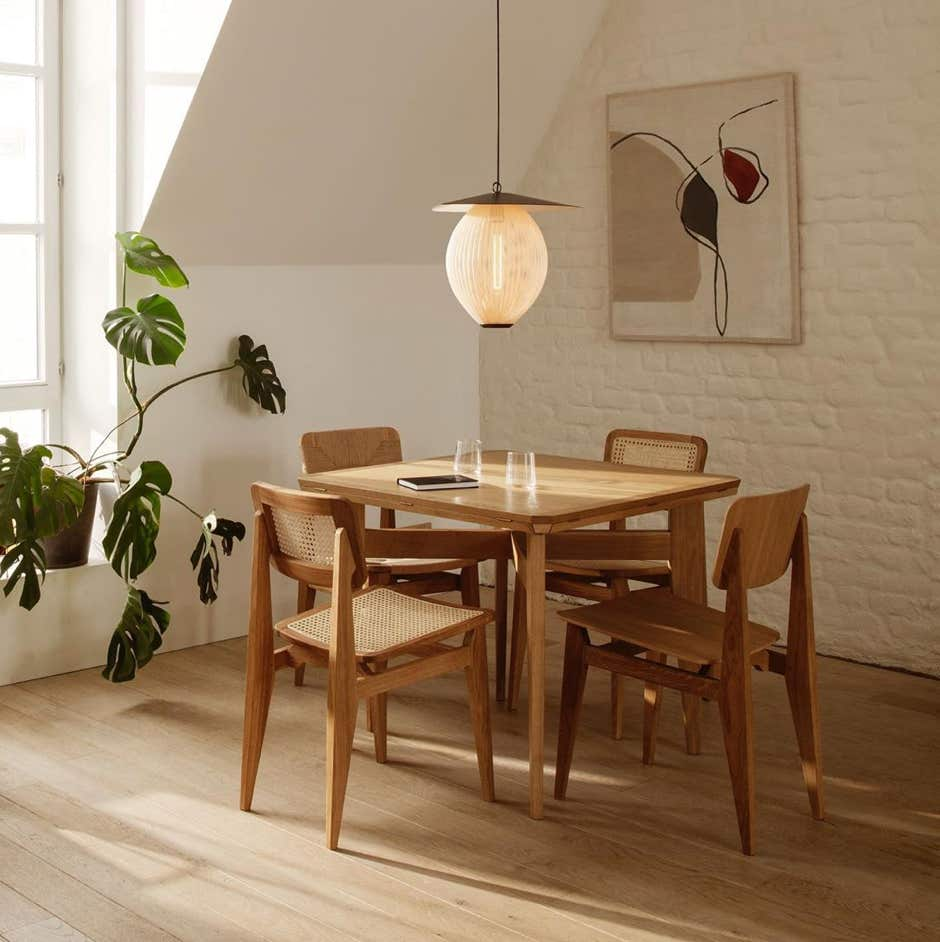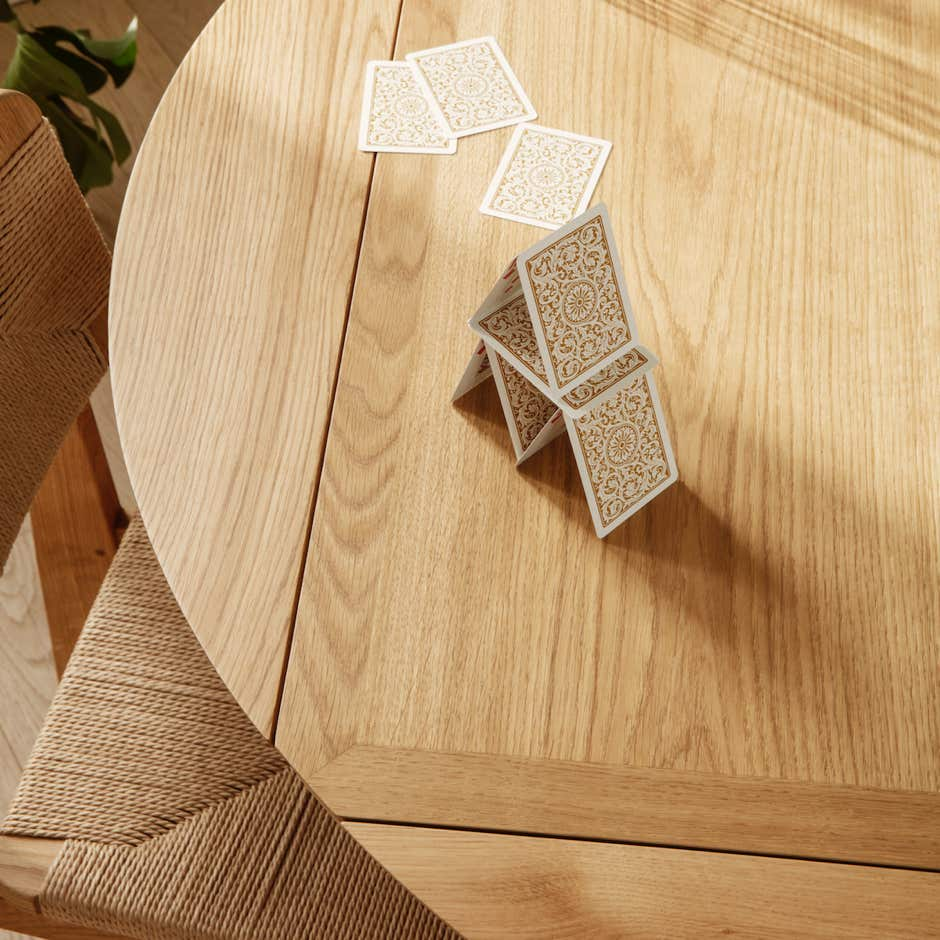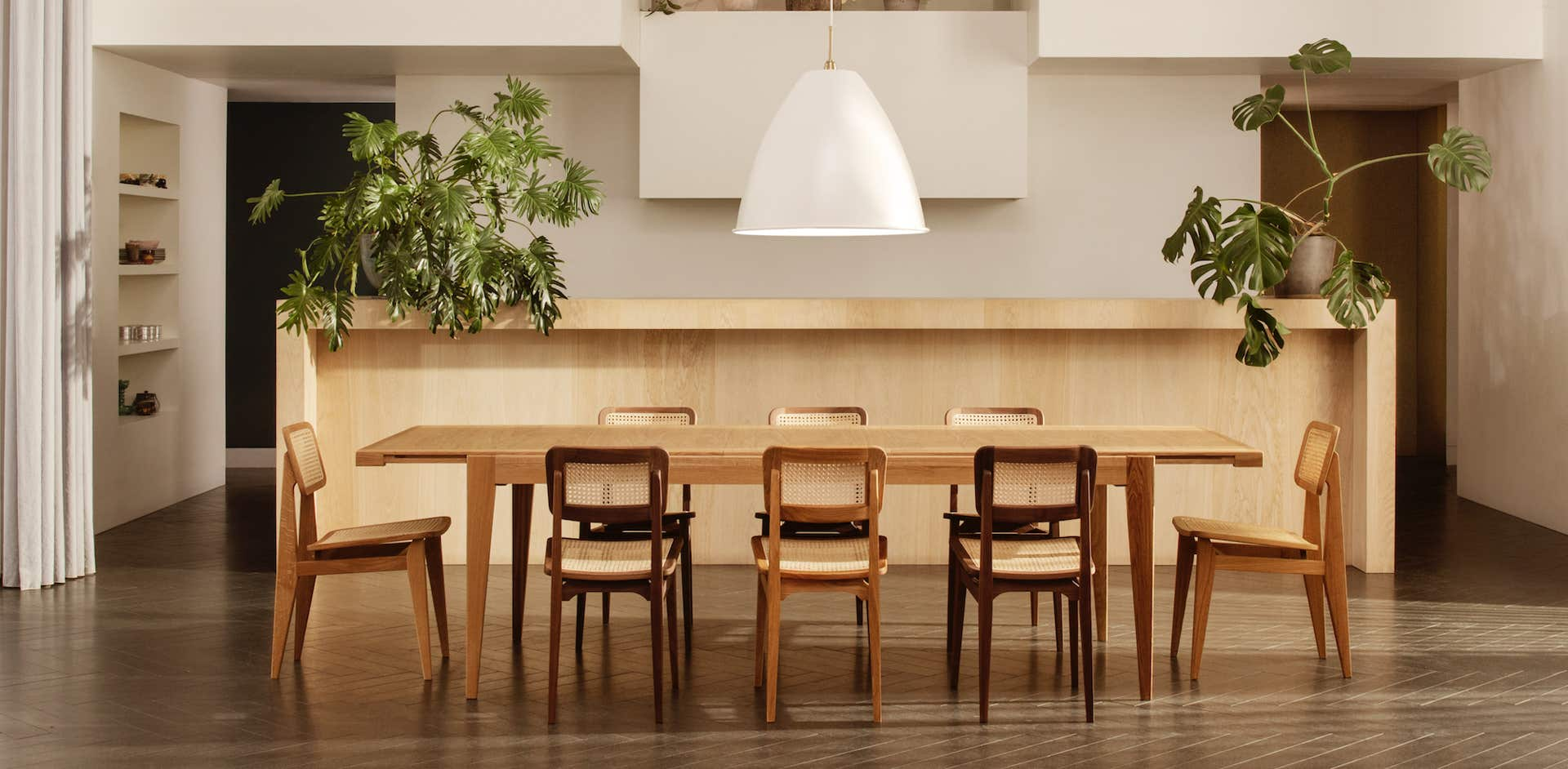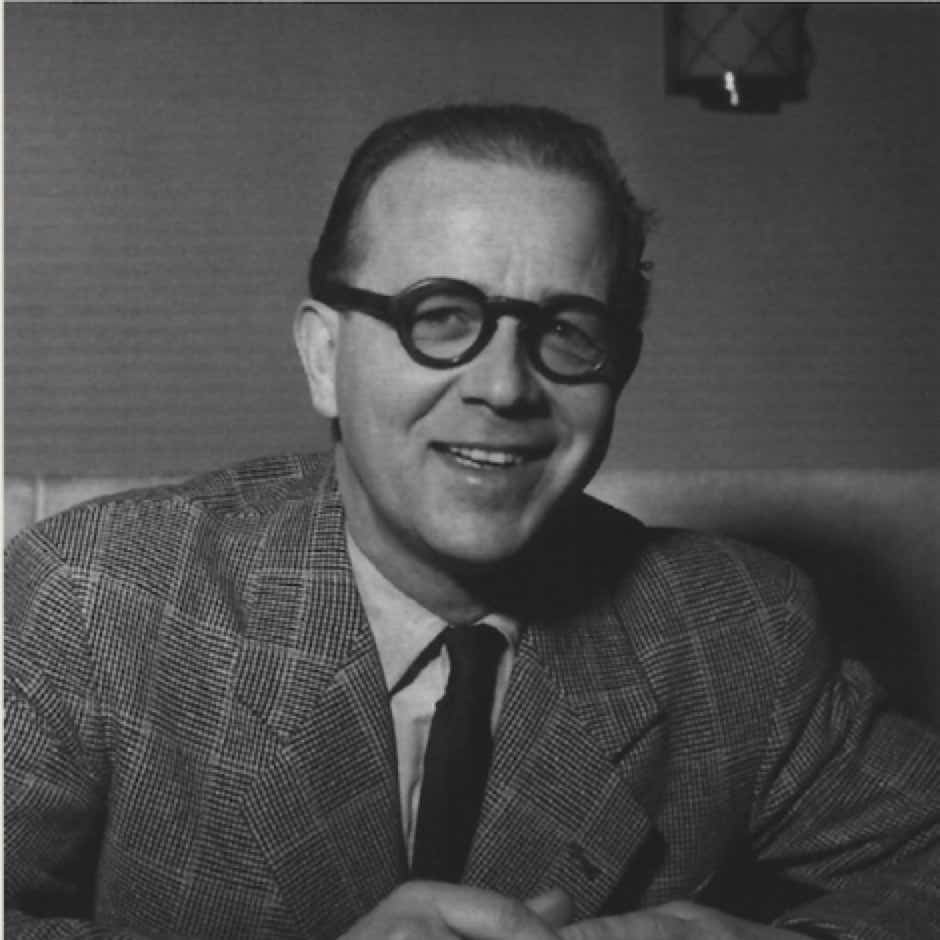15% off with DESIGN15



One of Marcel Gascoin’s most well-known pieces, designed in 1947. The C-Chair illustrates not only the aesthetic and practical power of Gascoin’s designs, but also the social conscience he strongly demonstrated through the post-war years in France. The C-Chair was originally created out of necessity to fit in to the new sizes of homes build at the end of World War II, where Gascoin made up for the lack of space by creating simple, functional furniture.
Cleverly designed with great attention to detail, the C-Chair possesses an elegant shape yet sturdy construction rooted in a simple, minimal and strong design language. Characterised by voluminous and vigorous legs, C-Chair reveals itself through modern lines, sobriety and high-quality wooden workmanship.
Dimensions C-Chair W41 x D53 x H79 cm – Seat height 45,5 cm
Black lacquered oak – french cane
The extendable B-Table, designed in 1950, is Marcel Gascoin's ingenious response to the limits imposed by by France’s compact postwar housing. Inspired by techniques used in boats, he created a two-in-one table that converts from a square table for four to a round table for six. The passage between the two is done in one smooth movement thanks to the magnetic mechanism.
Materials solid oak and veneer
Lacquered oak
American walnut lacquered
Simple, sturdy and space-efficient – the extendable S-Table showcases designer Marcel Gascoin’s mastery of form and function. The rectangular tabletop slides apart to allow the two neatly-concealed extension leaves to be slotted into place, giving options for six, eight or ten dinner guests. Conceived in 1951 by Gascoin for the living quarters of the Supreme Headquarters Allied Powers Europe (SHAPE) in France, the ingenious flexibility and understated elegance that made it popular then is just as relevant now.
Materials solid oak & veneer
S-Table extendable – Lacquered oak
S-Table extendable – American walnut lacquered

French designer Marcel Gascoin (1907-1986) was one of the leading furniture designers of the post-war era. He is recognized for the vital role he played in the reconstruction of France after the Second World War, when his modular storage units and matching sets of wooden furniture, which focused on clean aesthetics and functionality, became a staple for French households.
During the post-war housing crisis in France, Gascoin worked as an interior architect and designer for the French Ministry of Reconstruction and Urbanism, designing and building homes as well as the furniture to go inside them. He drew on his long-held love of wood, his childhood fascination with compact and efficient nautical interiors, and his training as an interior designer and cabinetmaker to create a new standard for furniture.
The new concept of a “living-room” (pièce à vivre) was launched at the “Logis 49” fair in Paris, combining two traditionally separate spaces for dining and resting or “living” and placing the kitchen nearby. Forward-thinking for its time, and driven by a strong social conscience, Gascoin’s democratic design connected art and industry, bringing together clean aesthetics and rational manufacturing processes to create some of the first modular and multifunctional furniture sets. They balanced utility with elegance and have been described as “a model of modernity”.
Gascoin was a member of the UAM (L’Union des Artistes Moderne or the French Union of Modern Artists) alongside important modernist designers such as Robert Mallet Stevens, Charlotte Perriand, Rene Herbst and Le Corbusier. This was an intellectual movement bound by a philosophy of design that united function with fabrication. In his own workshop, Gascoin passed his knowledge on to the next generation of interior decorators and furniture designers, and several of Gascoin’s apprentices, such as Michel Mortier, Pierre Paulin and Joseph- André Motte, went on to have distinguished careers as designers in their own right.
Today Gascoin’s work, unrecognized for a long time, has been progressively re-discovered by collectors, adoring his simple and striking furniture creations. GUBI has been working with the Marcel Gascoin archive since the reintroduction in 2018 of multiple editions of the C-Chair, followed by the Trèfle Stool, the B-Table and the S-Tables.
Cheaper elsewhere? Contact us for a counter-offer!